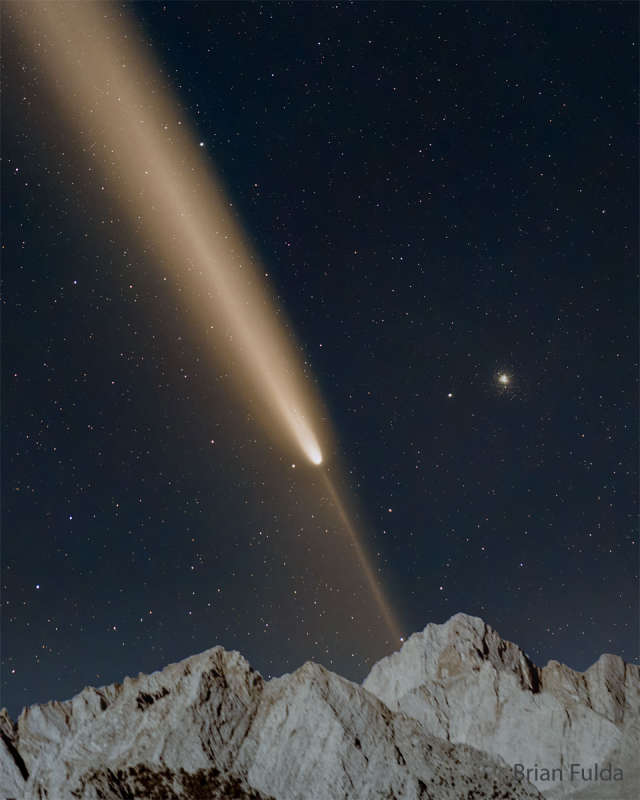
|
Credit & Copyright: Brian Fulda
Explanation:
The tails of Comet Tsuchinshan-ATLAS were a sight to behold.
Pictured, C/2023 A3 (Tsuchinshan┴ATLAS) was captured near peak impressiveness last
week over the
Eastern Sierra Mountains in
California,
USA.
The comet not only showed a
bright tail, but a distinct
anti-tail pointing in nearly the opposite direction.
The globular
star cluster
M5 can be seen on the right, far in the distance.
As it approached, it was unclear if this
crumbling iceberg would
disintegrate completely
as it warmed in the bright sunlight.
In reality, the comet survived to become brighter than
any star in the night (magnitude -4.9), but unfortunately was then so
nearly in front of the Sun that it was hard for many
casual observers to locate.
Whether
Comet Tsuchinshan-Atlas becomes known as the
Great Comet of 2024 now depends,
in part, on how impressive
incoming comet
C/2024 S1 (ATLAS) becomes over the next two weeks.
Your Sky Surprise:
What picture did APOD feature on your birthday? (post 1995)
|
January February March April May June July August September October November December |
| ||||||||||||||||||||||||||||||||||||||||||||||||
NASA Web Site Statements, Warnings, and Disclaimers
NASA Official: Jay Norris. Specific rights apply.
A service of: LHEA at NASA / GSFC
& Michigan Tech. U.
Based on Astronomy Picture
Of the Day
Publications with keywords: comet
Publications with words: comet
See also:
- APOD: 2025 December 1 ┴ 3I ATLAS: Tails of an Interstellar Comet
- APOD: 2025 November 25 ┴ Comet Lemmon and the Milky Way
- 3I/ATLAS: A View from Planet Earth
- APOD: 2025 November 17 ┴ Comet Lemmons Wandering Tail
- APOD: 2025 September 30 ┴ Comet Lemmon Brightens
- APOD: 2025 September 29 ┴ Two Camera Comets in One Sky
- APOD: 2025 September 26 ┴ A SWAN an ATLAS and Mars
